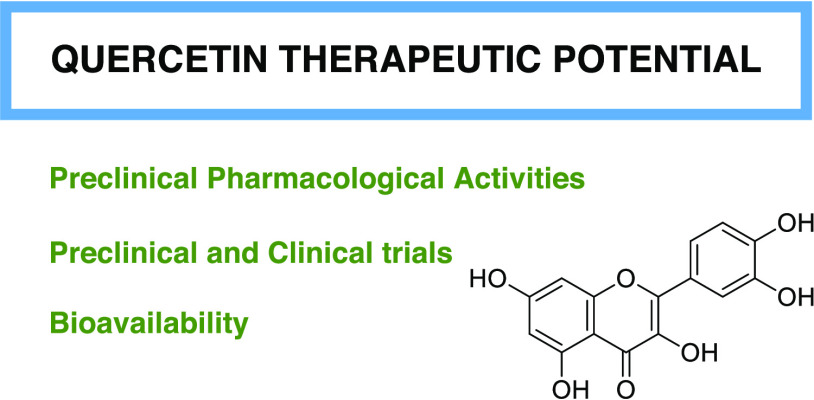- Record: found
- Abstract: found
- Article: not found
Therapeutic Potential of Quercetin: New Insights and Perspectives for Human Health

Read this article at
Abstract

Quercetin (Que) and its derivatives are naturally occurring phytochemicals with promising bioactive effects. The antidiabetic, anti-inflammatory, antioxidant, antimicrobial, anti-Alzheimer’s, antiarthritic, cardiovascular, and wound-healing effects of Que have been extensively investigated, as well as its anticancer activity against different cancer cell lines has been recently reported. Que and its derivatives are found predominantly in the Western diet, and people might benefit from their protective effect just by taking them via diets or as a food supplement. Bioavailability-related drug-delivery systems of Que have also been markedly exploited, and Que nanoparticles appear as a promising platform to enhance their bioavailability. The present review aims to provide a brief overview of the therapeutic effects, new insights, and upcoming perspectives of Que.
Related collections
Most cited references292
- Record: found
- Abstract: found
- Article: not found
Burden of liver diseases in the world
- Record: found
- Abstract: found
- Article: not found
Lead- and drug-like compounds: the rule-of-five revolution.

- Record: found
- Abstract: found
- Article: found
